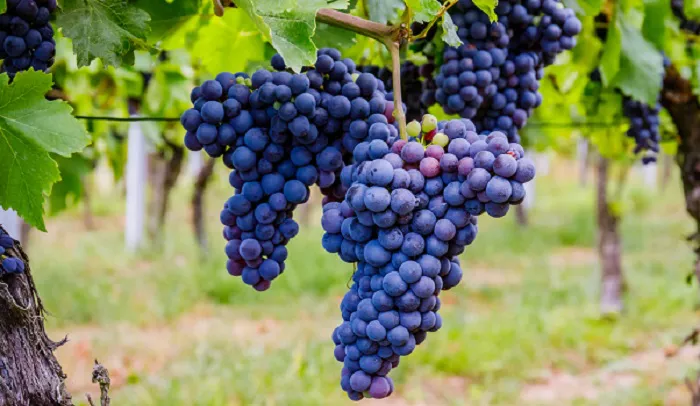Grape plants are a delightful addition to any garden, offering not only a bountiful harvest but also a touch of rustic charm. From the moment you plant the first vine to the time you enjoy the first juicy grape, the journey is as rewarding as it is fascinating. Understanding the growth timeline of grape plants can help gardeners plan and nurture their vines for optimal results. Let’s dive into the world of grape cultivation and explore the stages that lead to a fruitful harvest.
The Initial Stage: Planting and Establishment
Choosing the Right Time and Conditions
Planting grapevines is the first crucial step in their growth journey. The best time to plant grapevines is during the dormant season, typically in late winter or early spring. This allows the roots to establish themselves before the active growing season begins. Select a location with well-drained soil and plenty of sunlight, as grapes thrive in full sun. The soil should be slightly acidic, with a pH between 5.5 and 6.5, to ensure optimal nutrient uptake.
The First Year: Root Development
During the first year, the primary focus of the grapevine is root development. The vine will grow slowly above ground, but beneath the soil, the roots are spreading and anchoring the plant. It’s essential to provide consistent watering during this period, especially in the absence of rainfall. Mulching around the base of the vine can help retain moisture and suppress weeds. Avoid over-fertilizing in the first year, as this can lead to excessive foliage growth at the expense of root development.
The Growth Phase: Vigorous Expansion
The Second Year: Canopy Development
In the second year, the grapevine begins to show more vigorous growth above ground. The canopy starts to expand, and you may see the first signs of buds forming. This is a critical time for training the vine. Use stakes or a trellis system to guide the growth and ensure the vine develops a strong framework. Pruning during this year is essential to shape the vine and remove any weak or unwanted shoots. Proper pruning encourages the vine to focus its energy on producing healthy canes and future fruit.
The Third Year: First Fruits
By the third year, your grapevine is likely to produce its first small crop of grapes. While the yield may not be substantial, it’s an exciting milestone for any gardener. Continue to provide regular watering and monitor the vine for any signs of disease or pests. Fertilizing with a balanced fertilizer can help support the vine’s growth and fruit development. It’s also important to maintain good air circulation around the vine to prevent fungal diseases, which can be common in grape cultivation.
Maturity and Harvest: The Rewarding Phase
The Fourth Year and Beyond: Bountiful Harvests
From the fourth year onwards, your grapevine should enter its prime fruiting years. With proper care and maintenance, you can expect a bountiful harvest each year. The grapes will ripen in late summer to early fall, depending on the variety and climate. Regular pruning is still necessary to ensure the vine remains healthy and productive. Each year, remove any dead or diseased wood and thin out the canes to allow sunlight to reach the fruit.
Extending the Lifespan of Your Grapevine
Grapevines can live for several decades with the right care. Regular maintenance, including disease prevention and proper watering, is key to extending their lifespan. As the vine ages, it may require more attention to root health and overall vigor. Consider adding organic matter to the soil to replenish nutrients and improve soil structure. With time, your grapevine will become a cherished part of your garden, providing not only delicious fruit but also a sense of accomplishment and connection to nature.
Challenges and Solutions in Grape Cultivation
Common Pests and Diseases
Grape cultivation can come with its share of challenges. Common pests like aphids and spider mites can damage the leaves and fruit. Regular inspection and the use of organic pest control methods, such as insecticidal soap, can help manage these issues. Fungal diseases, such as powdery mildew and downy mildew, are also common in grapevines. Proper spacing and good air circulation can reduce the risk of infection. In severe cases, fungicides may be necessary, but always opt for organic solutions when possible.
Environmental Considerations
Environmental factors can also impact the growth of grape plants. Extreme weather conditions, such as drought or heavy rain, can stress the vine and affect fruit production. Installing a drip irrigation system can help maintain consistent soil moisture levels during dry periods. Additionally, protecting the vine from strong winds and extreme temperatures can help ensure its health and longevity.
Conclusion
Growing grape plants is a rewarding experience that combines patience, care, and a bit of gardening know-how. From the initial planting to the first harvest and beyond, each stage of the grapevine’s growth offers unique opportunities and challenges. With the right conditions, proper care, and a bit of dedication, you can enjoy the fruits of your labor for many years to come. Whether you’re a seasoned gardener or a novice, the journey of growing grapes is one that brings you closer to nature and the simple joys of gardening.


